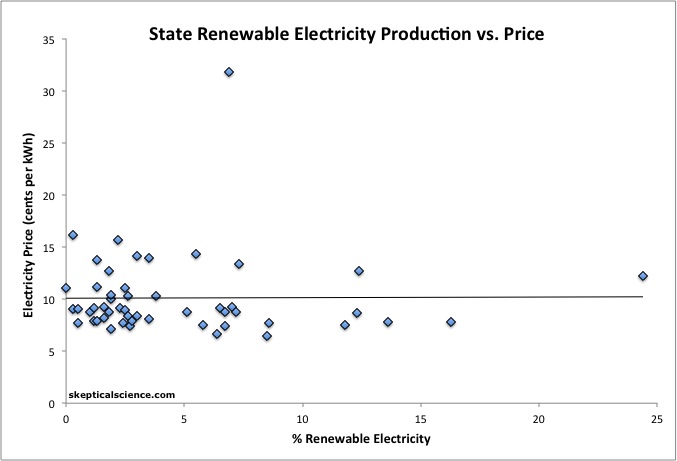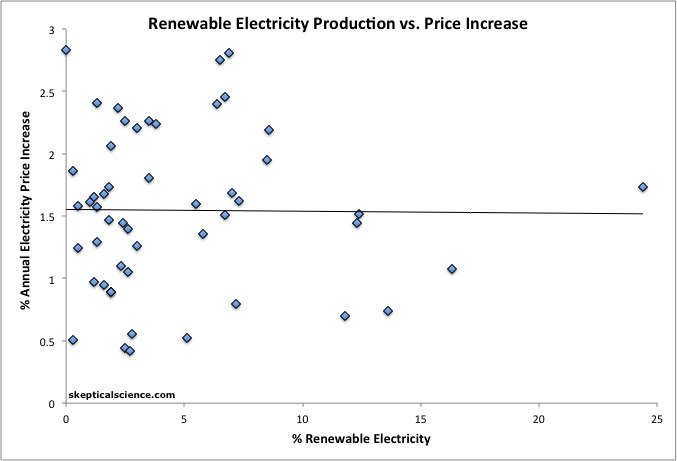 Arguments
Arguments
 Software
Software
 Resources
Comments
Resources
Comments
 The Consensus Project
The Consensus Project
 Translations
Translations
 About
Support
About
Support


Latest Posts
- Zeke's 2026 and 2027 global temperature forecasts
- 2025 SkS Weekly Climate Change & Global Warming News Roundup #51
- Skeptical Science New Research for Week #51 2025
- What are the causes of recent record-high global temperatures?
- Fact brief - Are toxic heavy metals from solar panels posing a threat to human health?
- Emergence vs Detection & Attribution
- 2025 SkS Weekly Climate Change & Global Warming News Roundup #50
- Skeptical Science New Research for Week #50 2025
- The rest of the world is lapping the U.S. in the EV race
- Fact brief - Are electromagnetic fields from solar farms harmful to human health?
- Comparing climate models with observations
- 2025 SkS Weekly Climate Change & Global Warming News Roundup #49
- Skeptical Science New Research for Week #49 2025
- Climate Adam & Dr Gilbz - Paris Climate Agreement At 10: Did It Do Anything?
- Fact brief - Does the recent slowdown in Arctic sea-ice extent loss disprove human-caused warming?
- Why the chemtrail conspiracy theory lingers and grows – and why Tucker Carlson is talking about it
- 2025 SkS Weekly Climate Change & Global Warming News Roundup #48
- Skeptical Science New Research for Week #48 2025
- Consensus machines
- Just have a Think - How an African energy revolution could save ALL of us.
- A girl’s grades drop every summer. There’s an alarming explanation.
- 2025 SkS Weekly Climate Change & Global Warming News Roundup #47
- Fact brief - Are changes in solar activity causing climate change?
- Skeptical Science New Research for Week #47 2025
- Exploring newly released estimates of current policy warming
- Climate Adam - Why the Climate Crisis is a Health Crisis
- Super pollutants are trendy, but we should be careful how we use them
- 2025 SkS Weekly Climate Change & Global Warming News Roundup #46
- Skeptical Science New Research for Week #46 2025
- On the Gates climate memo
Archived Rebuttal
This is the archived Intermediate rebuttal to the climate myth "Renewable energy is too expensive". Click here to view the latest rebuttal.
What the science says...
|
When you account for the effects which are not reflected in the market price of fossil fuels, like air pollution and health impacts, the true cost of coal and other fossil fuels is higher than the cost of most renewable energy technologies. |
Due to its abundance and low market price, coal combustion is the largest source of energy production in the world, accounting for 40% of all electricity worldwide. In the USA it accounts for 45% of electricity generation, and approximately 75% in Australia.
Unfortunately, coal combustion is a major contributor to global greenhouse gas emissions as well, accounting for 30% of total anthropogenic carbon dioxide (CO2) emissions worldwide, and 72% of CO2 emissions from global power generation. In addition, non-power generation uses increase its contribution to global human CO2 emissions to a whopping 41% (as of 2005).
Many people prefer coal combustion to renewable energy because it seems to be cheaper. However, when accounting for the true costs of coal power, most renewable energy sources are actually significantly cheaper in the long-run.
Coal Externalities
A major problem with coal is that its full costs are not reflected in its market price, and thus while we may seemingly purchase and burn coal cheaply, in reality we are paying a much higher cost in the long run, if we look at the big picture. Economists refer to the impacts on human and environmental health which are not reflected in the price of coal as "externalities". Those who benefit from the seemingly cheap electricity don't pay for these externalities directly, but the public eventually has to pay in the form of medical bills, environmental cleanups, etc.
In a report published in the Annals of the New York Academy of Sciences, Epstein et al. (2011) do a full cost accounting for the life cycle of coal, taking these externalities into account. Among the factors included in this analysis were:
- government coal subsidies
- increased illness and mortality due to mining pollution
- climate change from greenhouse gas emissions
- particulates causing air pollution
- loss of biodiversity
- cost to taxpayers of environmental monitoring and cleanup
- decreased property values
- infrastructure damages from mudslides resulting from mountaintop removal
- infrastructure damage from mine blasting
- impacts of acid rain resulting from coal combustion byproducts
- water pollution
Most of these external factors do not apply to most renewable energy sources. The majority of the externality costs come from reduction in air quality, contribution to climate change, and impacts to public health. Epstein et al. find that the total cost of these externalities ranges from approximately 9 to 27 cents per kilowatt-hour (kWh) of electricity generated, with a median of approximately 18 cents per kWh. The authors note that this is a conservative estimate, because they have not accounted for every associated impact.

Figure 1: Coal externalized cost (cents per kWh) from Epstein et al. (2011)
Another study by economists Muller, Mendelsohn, and Norhaus (MMN11) looked at just the external costs associated with the damage done by air pollution, and arrived at a best estimate of 3.6 cents per kWh of external costs, despite being unrealistically conservative (Figure 2).
Figure 2: Average US coal electricity price vs. MMN11 and Epstein 2001 best estimate coal external costs.
Cost Comparison
The US Energy Information Administration provides a comparison of levelized costs for different power generation sources. Levelized cost represents the present value of the total cost of building and operating a generating plant over a period of time, and reflects overnight capital cost, fuel cost, operation and maintenance costs, financing costs, and an assumed utilization rate for each plant type. To convert from dollars per megawatt-hour to cents per kWh, move the decimal point in the table below one spot to the left (for example, conventional coal is 9.48 cents per kWh on average).

As you can see, the externalities are sufficient to triple the cost of coal power, if they were reflected in its price. If we include the coal externalities, it increases the levalized costs to approximately 18 to 28 cents per kWh, which is more than hydroelectric, onshore wind, geothermal, biomass, nuclear, natural gas, and on par with solar photovoltaic and solar thermal (whose costs are falling rapidly), and offshore wind. Suddenly coal doesn't look like such a good deal.
Recommendations
Epstein et al. conclude by offering a number of recommendations:
-
Comprehensive comparative analyses of life cycle costs of all electricity generation technologies and practices are needed to guide the development of future energy policies.
-
Begin phasing out coal and phasing in cleanly powered smart grids, using place-appropriate alternative energy sources.
-
A healthy energy future can include electric vehicles, plugged into cleanly powered smart grids; and healthy cities initiatives, including green buildings, roof-top gardens, public transport, and smart growth.
-
Alternative industrial and farming policies are needed for coal-field regions, to support the manufacture and installation of solar, wind, small-scale hydro, and smart grid technologies. Rural electric co-ops can help in meeting consumer demands.
-
We must end mountaintop removal (MTR) mining, reclaim all MTR sites and abandoned mine lands, and ensure that local water sources are safe for consumption.
-
Funds are needed for clean enterprises, reclamation, and water treatment.
-
Fund-generating methods include: maintaining revenues from the workers’ compensation coal tax; increasing coal severance tax rates; increasing fees on coal haul trucks and trains; reforming the structure of credits and taxes to remove misaligned incentives; reforming federal and state subsidies to incentivize clean technology infrastructure.
-
To transform our energy infrastructure, we must realign federal and state rules, regulations, and rewards to stimulate manufacturing of and markets for clean and efficient energy systems. Such a transformation would be beneficial for our health, for the environment, for sustained economic health, and would contribute to stabilizing the global climate.
Real World Data
In the USA, there is no correlation between state renewable electricity production and electricity price (Figure 3) or renewable production and electricity price increase over the past two decades (Figure 4).
Figure 3: State renewable (excluding hydroelectricity) electricity percentage of total electricity generation vs. electricity price (blue diamonds) with a linear trend (black line). Data from EIA (here and here).
Figure 4: State renewable (excluding hydroelectricity) electricity percentage of total electricity generation vs. the percent annual increase in electricity price 1990—2011 (blue diamonds) with a linear trend (black line). Data from EIA (here and here).
If deploying renewable energy does not raise electricity prices, then clearly it is not an expensive proposition.
Bottom Line
Ultimately it's a significant problem that we rely so heavily on coal to meet our energy needs due to its artificially low market price. It's like eating junk food for every meal. It's cheap, it tastes good, but it's not healthy and eventually you'll pay the price through poor health, high medical bills, and a shortened lifespan.
We may not pay the costs of climate change, lost biodiversity, air and water pollution, adverse health effects, etc. up front, but we do have to pay them eventually. We need to follow the recommendations of Epstein et al., transform our energy infrastructure, and move away from our dependence on coal and other fossil fuels.
Updated on 2013-01-03 by dana1981.
THE ESCALATOR

(free to republish)



























































